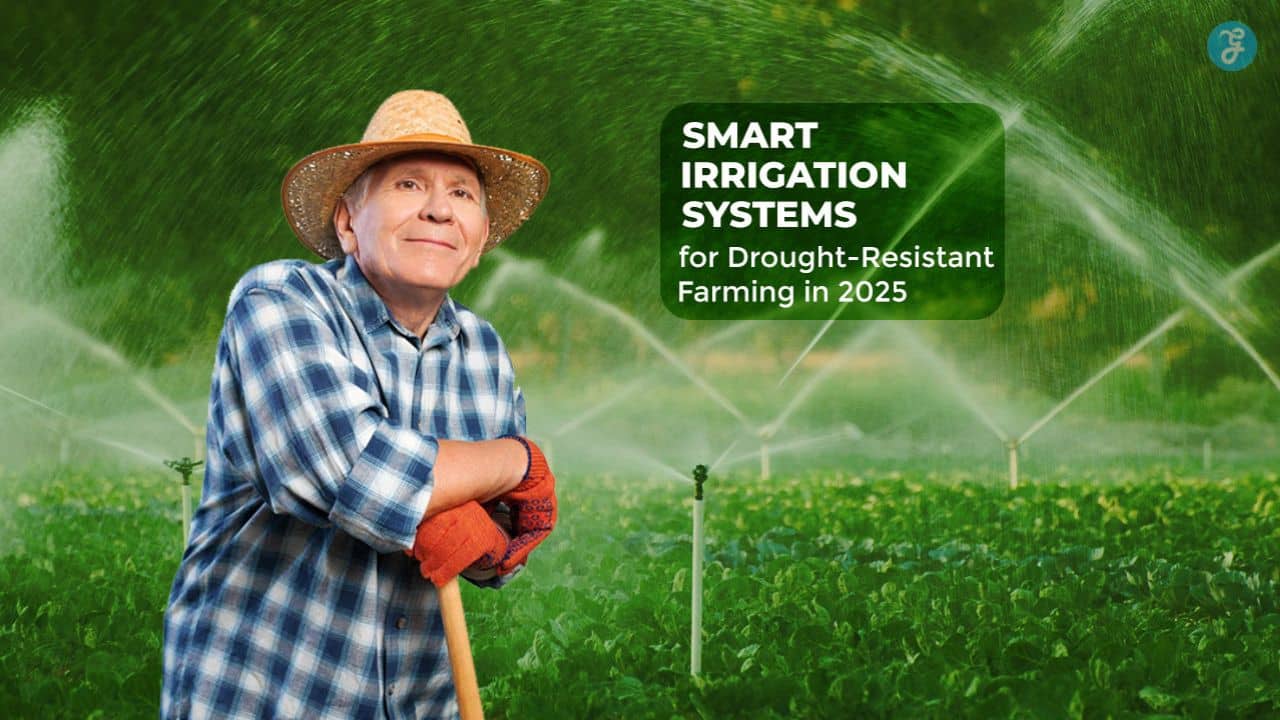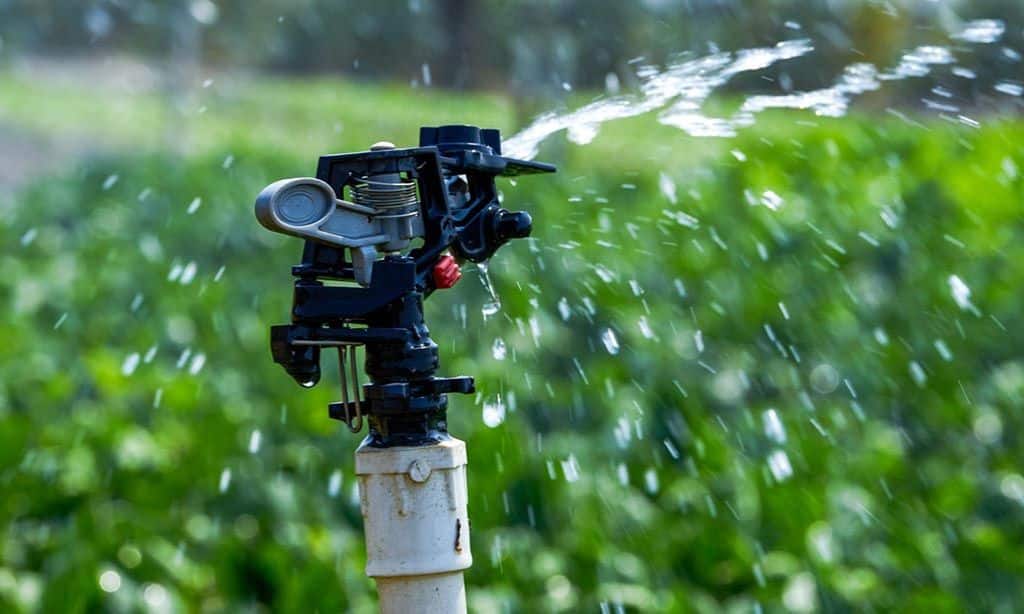In the face of escalating climate challenges, drought-resistant farming has become a necessity rather than a choice.
By 2025, water scarcity is expected to impact over two-thirds of global agriculture, driving the urgent need for sustainable solutions.
Enter smart irrigation systems—innovative technologies designed to optimize water use, enhance crop yields, and ensure the long-term viability of farming in drought-prone regions.
This article explores five cutting-edge smart irrigation systems that are redefining sustainable agriculture.
From real-time monitoring to AI-driven solutions, these technologies are paving the way for a more resilient agricultural future.
What Are Smart Irrigation Systems?
Smart irrigation systems are advanced technologies that use sensors, weather data, and automation to optimize water usage in agriculture.
Unlike traditional systems, these tools ensure water is delivered precisely where and when it’s needed, minimizing waste and maximizing efficiency.
Core Features:
- Integration with IoT (Internet of Things) for remote monitoring.
- AI algorithms to predict watering needs.
- Real-time data analysis for soil moisture and weather conditions.
- Compatibility with both large-scale and small-scale farming setups.
Benefits of Smart Irrigation for Drought Management
- Water Conservation: Reduce water usage by up to 50% compared to traditional methods. For example, a vineyard in California using drip irrigation reported a 40% decrease in water usage without compromising yield.
- Improved Yields: Maintain consistent soil moisture levels for healthier crops, ensuring better resistance against droughts.
- Cost Efficiency: Lower water bills and reduce labor costs through automation. Many farmers recover their initial investment within two years due to operational savings.
- Environmental Impact: These systems help reduce the carbon footprint of agricultural practices by minimizing the overuse of water and energy.
Why Drought-Resistant Farming Is Critical in 2025
Escalating Water Scarcity
By 2025, the United Nations predicts that 1.8 billion people will live in regions plagued by water scarcity.
For farmers, this means adapting to unpredictable rainfall and prolonged droughts to ensure food security.
For example, regions in sub-Saharan Africa and parts of the United States, such as California and Arizona, are already witnessing these challenges firsthand.
Role of Smart Irrigation in Sustainability
Smart irrigation systems play a pivotal role in combating water scarcity by:
- Reducing dependence on erratic rainfall through precise irrigation.
- Enhancing water use efficiency with real-time monitoring and automation.
- Supporting sustainable agricultural practices that align with global environmental goals, such as the UN’s Sustainable Development Goal 6 (Clean Water and Sanitation).
Top 5 Smart Irrigation Systems in 2025
Comparison Table of Smart Irrigation Systems
| System | Key Features | Best For |
| Netafim Precision Irrigation | Drip technology, soil monitoring | Diverse crops |
| Rain Bird Smart Controllers | Weather-based, smartphone-enabled | Small-medium farms |
| Toro Evolution Series | Cloud control, flow sensors | Precision farming |
| Hunter Hydrawise | Weather analytics, retrofitting | All climates |
| Jain Logic Solutions | Data-driven, large-scale farms | Commercial farming |
5 Best Smart Irrigation Systems
Let’s take a look.
1. Netafim Precision Irrigation Systems
Known as a pioneer in drip irrigation technology, Netafim offers solutions tailored for diverse crops and farm sizes.
Its systems are especially popular among fruit and vegetable growers for their high water efficiency.
With a strong focus on real-time monitoring, Netafim ensures that crops get precisely the amount of water they need, no more, no less.
Key Features
- Drip irrigation technology tailored for various crops, including fruits, vegetables, and grains.
- Real-time soil monitoring for precise water delivery.
- Compatibility with diverse terrains and farm sizes, making it a versatile option.
Benefits
- Reduces water usage by up to 50%, particularly in arid regions.
- Improves crop quality and yields, especially for high-value crops like grapes and citrus fruits.
- Highly durable and low maintenance, ensuring long-term cost-effectiveness.
Pricing and Availability
- Estimated cost: $1,500–$5,000 depending on farm size.
- Availability: Worldwide through authorized distributors.
2. Rain Bird Smart Controllers
Rain Bird’s smart irrigation controllers are renowned for their adaptability and ease of use. Designed with small and medium farms in mind, these systems help farmers take advantage of weather-responsive technology to save water and time.
Rain Bird’s customizable plans make it a go-to choice for a variety of crops.
Key Features
- Weather-responsive watering schedules that adjust based on real-time conditions.
- Smartphone integration for remote management and monitoring.
- Customizable irrigation plans for different crop types.
Benefits
- Reduces overwatering by up to 35%, particularly beneficial in regions with seasonal rainfall.
- Ideal for small to medium-sized farms due to its affordability and user-friendly setup.
- Offers detailed analytics to help farmers refine water management practices.
Pricing and Availability
- Estimated cost: $800–$2,000.
- Availability: Widely available in North America, Europe, and parts of Asia.
3. Toro Evolution Series Controllers
Toro’s Evolution Series combines robust hardware with advanced cloud-based software to deliver precision farming solutions.
Farmers using Toro benefit from its proactive leak detection and integration with existing infrastructure, making it a cost-effective choice for improving irrigation efficiency.
Key Features
- Cloud-based control systems for remote access via smartphones or computers.
- Advanced flow sensors to detect leaks and prevent water wastage.
- Compatibility with existing irrigation infrastructure, reducing retrofitting costs.
Benefits
- Prevents water wastage through proactive leak detection and automatic shutdown.
- Enhances efficiency with automated scheduling that accounts for crop-specific needs.
- Affordable option for precision farming, making it accessible for mid-tier farmers.
Pricing and Availability
- Estimated cost: $1,200–$3,000.
- Availability: Available through major agricultural retailers and online platforms.
4. Hunter Industries Hydrawise Controllers
Hunter Industries’ Hydrawise controllers excel in predictive analytics, making them ideal for regions with unpredictable weather patterns.
Their retrofitting options and user-friendly smartphone integration make these controllers highly accessible for both small and large-scale operations.
Key Features
- Predictive weather analytics for accurate watering schedules.
- Easy retrofitting options for older systems, making upgrades seamless.
- Smartphone alerts for maintenance and troubleshooting needs.
Benefits
- Saves water by adjusting schedules based on local weather forecasts.
- Increases crop resilience during droughts, particularly for sensitive crops like lettuce and strawberries.
- Suitable for diverse climates and crop types, from temperate to tropical regions.
Pricing and Availability
- Estimated cost: $1,000–$2,500.
- Availability: Sold globally through online and local distributors.
5. Jain Logic Smart Irrigation Solutions
Jain Logic is a data-centric solution for large-scale farmers looking to optimize resource use.
Known for its advanced dashboards and scalable design, Jain Logic has been widely adopted in commercial farms across continents, helping farmers improve yields while reducing input costs.
Key Features
- Data-driven dashboards for monitoring irrigation efficiency in real time.
- Cloud-enabled management suitable for large-scale farms.
- Advanced sensors for soil moisture, nutrient levels, and weather patterns.
Benefits
- Maximizes water use efficiency by delivering precise amounts to each zone.
- Ideal for commercial and large-scale farms growing high-value crops like almonds and avocados.
- Offers scalability for expanding operations, ensuring long-term relevance.
Pricing and Availability
- Estimated cost: $2,000–$10,000.
- Availability: Available in Asia, Africa, North America, and Australia.
Factors to Consider When Choosing a Smart Irrigation System
Farm Size and Crop Type
Select a system tailored to your farm’s scale and specific crop requirements.
For instance:
- Drip irrigation for vineyards and orchards.
- Weather-based systems for open-field crops.
Farm Size vs. Ideal System
| Farm Size | Recommended System | Primary Benefits |
| Small (1–5 acres) | Rain Bird Smart Controllers | Affordable, easy setup |
| Medium (5–20 acres) | Toro Evolution Series | Precision control, scalable |
| Large (20+ acres) | Jain Logic Solutions | Advanced analytics, scalable |
Budget and Long-Term Savings
While initial costs can be high, consider the long-term savings from reduced water usage and labor costs. For example, farmers using Netafim systems often recover costs within 2–4 years.
Compatibility with Existing Infrastructure
Choose systems that integrate seamlessly with current setups. Retrofitting options can significantly reduce costs and downtime.
Takeaways
As water scarcity continues to challenge global agriculture, smart irrigation systems offer a sustainable solution for drought-resistant farming.
By optimizing water usage and enhancing efficiency, these technologies not only improve crop yields but also support long-term environmental goals.
Farmers who adopt these systems in 2025 will be better equipped to tackle the challenges of a changing climate.
Explore these cutting-edge solutions and invest in the future of sustainable farming today.





































